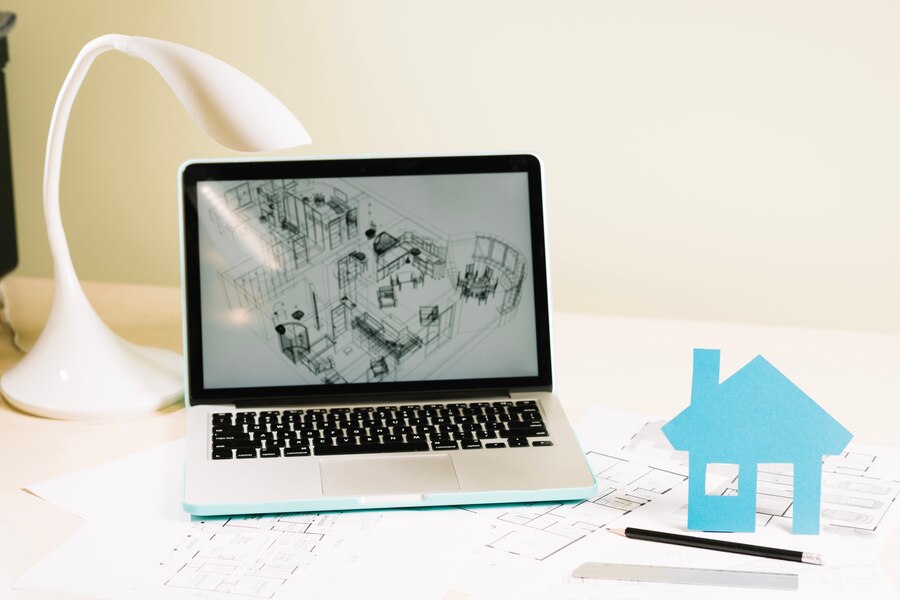The Pros and Cons of Using Property Management Software for Commercial Properties

Managing commercial properties—whether offices, retail spaces, or industrial units—can be rewarding, but also time-consuming and complex. From lease tracking and rent collection to maintenance coordination and reporting, the list of daily tasks is long. That’s why many commercial landlords and property managers turn to software to help manage it all more smoothly.
But is property management software the right solution for everyone? In this article, we’ll look at both the pros and cons of using software in the commercial property world—so you can make an informed choice based on your needs.
What Is Property Management Software for Commercial Use?
At its core, property management software is a tool that helps you handle the daily operations of your properties. For commercial settings, this can include managing leases, billing tenants, organising repairs, storing documents, and generating reports.
Some systems also offer white label property management software, which means you can use the technology under your own branding. This is especially useful for agencies or landlords who want to offer a seamless, professional experience to clients and tenants.
The Pros of Using Property Management Software for Commercial Properties
Let’s start with the positives. There’s a reason so many in the industry are adopting these systems—they really can make life easier when used well.
1. Saves Time on Repetitive Tasks
Commercial property management often involves repetitive admin tasks—sending invoices, reminding tenants about rent, scheduling inspections, and tracking issues.
Software can automate many of these tasks. For example, you can set up automatic rent reminders, recurring invoice templates, or digital maintenance requests—all from a single dashboard.
This frees up your time to focus on strategic decisions, rather than chasing paperwork.
2. Keeps Everything Organised
With multiple tenants, buildings, and contracts, it’s easy for documents to get lost or for small details to slip through the cracks.
Property management software helps centralise all your information. Lease agreements, service contracts, payment records, and communication logs are stored in one place, often searchable and sorted by property. That’s far easier to manage than juggling spreadsheets or filing cabinets.
3. Gives Tenants a Smoother Experience
Tenants in commercial spaces often expect prompt, professional service. When they can log in to a portal, see their invoices, raise a repair issue, or download their lease at any time, it shows that you’re running things properly.
Systems that support tenant communication and service tracking can help build trust and reduce misunderstandings.
4. Supports Branding and Customisation
If you’re managing properties under your own name—or running a property agency—branding matters. This is where white label property management software shines.
With the right system, you can present your tenants with a branded platform that looks and feels like it’s been built just for them. You keep your logo, your colours, and your domain, while the software works quietly in the background.
You can find a practical example of this here. This system is designed to support commercial landlords who want the control of custom branding with the simplicity of an existing solution.
5. Easier Reporting and Planning
When everything is stored in one place—rents, maintenance, lease dates—it becomes easier to spot trends or prepare reports.
Want to see which tenants are consistently late on rent? Or track upcoming lease renewals across multiple properties? A few clicks will usually get you there. This is especially useful when reporting to stakeholders or preparing for financial reviews.
6. Scales With Your Business
Good software grows with you. Whether you’re managing five commercial units or fifty, the same system can often handle the added volume.
You can add more properties, more team members, or more features over time. This makes it easier to expand without completely changing your setup.
The Cons of Using Property Management Software for Commercial Properties
While there are clear benefits, it’s important to consider the limitations and potential drawbacks as well.
1. There’s a Learning Curve
Most software systems require some time to learn. Setting things up properly—importing leases, configuring rent schedules, training staff—can take a bit of patience.
If you or your team aren’t particularly tech-savvy, this could be a barrier. However, many providers offer support or onboarding help to make the transition easier.
2. Not All Features Are Relevant
Some systems are built for residential use and may not fit your commercial needs perfectly. For example, you might not need tenant screening tools, but you will need custom lease terms or commercial service charge tracking.
It’s worth taking time to compare options and make sure the software is actually designed for commercial property management.
The system shown here includes features built with this in mind, such as branded tenant portals and flexible lease management, making it a good reference point when reviewing your options.
3. Dependence on Internet and Devices
Because most modern property management software is cloud-based, it does rely on a stable internet connection and access to devices like laptops or smartphones.
If your team prefers working offline or in areas with poor connectivity, this could be a concern. That said, the convenience and flexibility of cloud systems usually outweigh the drawbacks for most users today.
4. Subscription Costs
While software can save money in the long run, it does come with a regular cost. This might be a monthly subscription or an annual licence.
The cost varies depending on the size of your portfolio, number of users, and features included. Before signing up, it’s worth checking what’s covered, and whether you’ll actually use all the available tools.
If branding is a key part of your business, investing in white label property management software like this can bring long-term value—especially if you’re offering services to multiple clients.
A Quick Example: Small Agency Managing Mixed Commercial Units
Imagine you’re running a small property agency managing several mixed-use buildings—some shops, some offices, and a few storage spaces.
Each tenant has different lease terms, rent dates, and maintenance needs. Without software, you’re spending time every week chasing payments, drafting invoices, and updating spreadsheets.
Switching to a property management system allows your tenants to access a branded portal with their lease info and invoices. You set up automatic rent reminders and service logs. Now you spend less time on admin, and more time finding new tenants or improving services.
This is the kind of day-to-day benefit you get when using the right system—and why a white label option can make all the difference in how your agency is perceived.
Final Thoughts: Is It Worth It?
If you’re managing more than a handful of commercial properties, property management software can be a real help. It simplifies tasks, helps you stay organised, and improves the tenant experience.
That said, it’s not a one-size-fits-all solution. The best approach is to start with your needs—what do you actually want the software to do? From there, you can explore options that fit your business.
If keeping control of your branding is important, a white label property management software is worth looking into. It gives you the tech you need, without compromising how you present yourself to clients and tenants.
Done right, it’s not just software—it’s a smarter way to run your business.
Let me know if you’d like a shorter summary for LinkedIn or need help tailoring this article for a property industry blog. I can also help create supporting content like infographics or explainer guides.

Best Tips and Tricks for Bitcoin Investments

Top Benefits of Hiring Professional Pet Sitting Services for Your Pets

Expert Insights on Improving Productivity and Efficiency

Accelerating drug discovery through the DEL-ML-CS approach

AI in Marketing Is No Longer a Buzzword — It’s the Strategy

The Role of Continuous Improvement in Agile Project Management

Transform Your Review Process with Cutting-Edge AI Detection

8 YouTube Shorts Maker Tools to Create Viral Clips in 2026 (Expert Recommendations)








